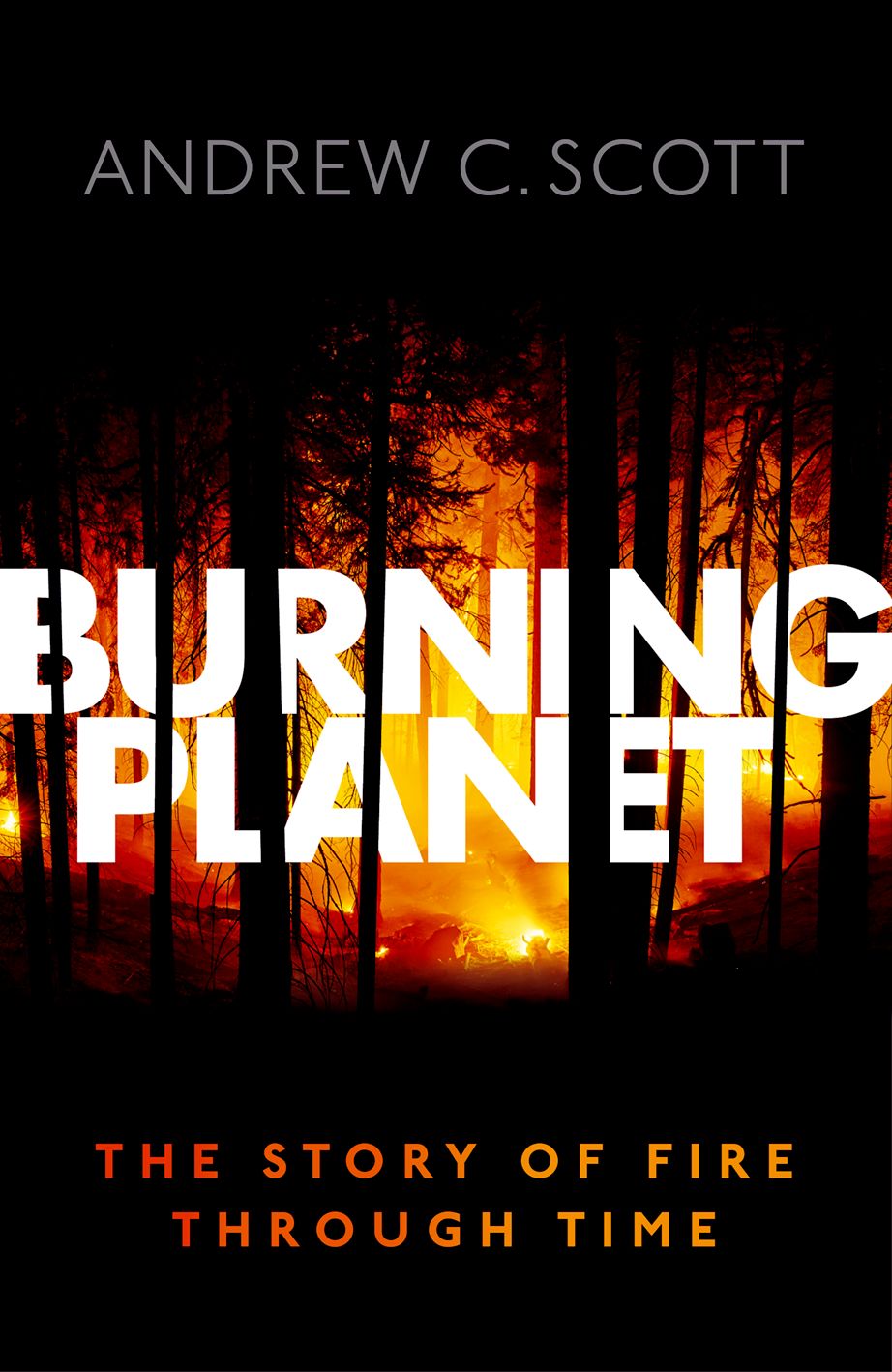
Fire is one of the most important forces on Earth. The use of fire by humans has long been considered as a defining property of intelligence, separating us from other animals. The exact timing of the discovery and use of fire by humans has been a subject of continuing research, yet perhaps two questions have, until now, received little attention: What was fire on Earth like before humans appeared? And what experience of fire could early humans have had?
Three main components are needed for fire. First, there must be a fuel to burn. Second, oxygen must be available — after all, combustion is essentially an oxidation process that gives off heat and light. And third, there must be a heat or ignition source that allows the fire to begin. We would not expect fire on a barren Earth; there must be plant life on land that can provide a fuel source. And vegetation fires can’t occur until the oxygen level in the atmosphere has reached around 15%. (It is 21% today.) This is why we smother a fire with a blanket or sand, pump carbon dioxide on it, or even flood it with water to extinguish it — to cut off the oxygen. The main sources of ignition before humans appeared were lightning strikes.
Our evidence of fire in the fossil record (in deep time, as we often refer to the long geological stretch of time before humans) is based mainly on the occurrence of charcoal. This is the partially combusted plant material left after a fire has been extinguished. The oldest fire recorded on Earth has been identified from charcoal in rocks formed during the late Silurian Period, around 420 million years ago. Though plants had spread on land at that point, fluctuating levels of atmospheric oxygen meant that the first extensive wildfires recorded came somewhat later, dating from around 345 million years ago, the early Carboniferous Period.
We know that there were also periods through Earth history when oxygen levels in the atmosphere were higher than today. During these times, fires would have been hotter and more frequent. One of these high-fire intervals occurred during the later stages of the Cretaceous, when dinosaurs ruled the Earth and flowering plants first appeared. New research suggests that many plants that have adapted well to a fiery landscape or indeed need fire to reproduce, such as some pines, eucalypts and proteas, first appeared around this time, some 90 million years ago.
But it was the spread of grasses and grasslands such as the savannas of Africa, around 7 million years ago, that made a big impact, not only on the environment but also on the animals living there. Computer modeling suggests that savannas need regular fire, or else the vegetation may convert to scrub and forest. In this context, early humans living on the savannas would often have seen fire on the landscape, and the first “discovery” would have involved seeing and following the fire. Charred, dead animals and plants left in its wake may have been collected, and animals that were fleeing the fire ambushed and killed.
The first stage of human interaction with fire, perhaps as early as 1.5 million years ago in Africa, is likely to have been opportunistic. Fire may have simply been conserved by adding fuel, such as dung that is slow burning. A fire would have been useful not only for light and warmth at night, but to frighten off predatory animals, and the smoke would have been effective in keeping insects away. This ability to “stretch” fire was a novel feat, only developed by humans.
So much we can reasonably speculate. But finding evidence of the earliest regular use of fire is fraught with difficulty, as identifying ancient hearths is not always straightforward. Individual occurrences are also of limited use; there needs to be evidence from multiple sites. There are claims for such evidence from sites in southern Africa that are over a million years old, such as the Wonderwerk Cave in Northern Cape Province. Clear evidence of habitual use of fire, though, comes from caves in Israel dating back between 400,000 and 300,000 years ago, and include the repeated use of a single hearth in Qesem Cave, and indications of roasting meat.
The next stage was to gain the ability to start a fire.
This would have enabled more regular and managed use, allowing the development of cooking, expanding our diet. According to British primatologist Richard Wrangham, cooking may have played a role in the expansion of our brains. The hearth would have probably formed a social focus, helping the development of language. The use of flints to start fire may have occurred as far back as 400,000 years ago, but concrete evidence only comes from as recently as 40,000 years ago. As the American archeologist Andrew Sorensen and his colleagues have put it, “we archaeologists have yet to ascertain, even in coarse chronological terms — when in our early prehistory fire became part of the human tool kit.” The British archeologist John Gowlett has described the discovery of fire by humans as a convoluted process that took place over a long period of time.
The third stage, in which humans began to use and control fire on a regular and widespread basis, may have started only 7,000 years ago. This may have included the use of fire for land clearance for agriculture and even for warfare. But even when humans were controlling fire to the extent that it could be used to modify agriculture, we should not lose sight of the fact that wildfire is predominantly controlled by climate.
Today we humans appear to be confident of our ability to control fire. But we should not become overconfident. The spread of non-native grasses such as Gamba grass in Australia and Cheat grass in North America, together with a warming climate, are having a severe impact on the nature, scale and frequency of wildfires. It would be well for us to take on board the fact that fire has been part of Earth’s story for the past 420 million years, and will continue to be so long after we are all gone.

Andrew C. Scott is author of the new book Burning Planet published by Oxford University Press, co-author of Fire on Earth: An Introduction published by Wiley and co-editor of The Interaction of Fire and Mankind published by the Royal Society.
More Must-Reads from TIME
- Why Biden Dropped Out
- Ukraine’s Plan to Survive Trump
- The Rise of a New Kind of Parenting Guru
- The Chaos and Commotion of the RNC in Photos
- Why We All Have a Stake in Twisters’ Success
- 8 Eating Habits That Actually Improve Your Sleep
- Welcome to the Noah Lyles Olympics
- Get Our Paris Olympics Newsletter in Your Inbox
Contact us at letters@time.com